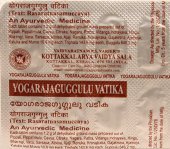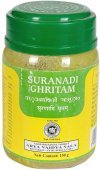Ativisa, Ativisā, Ativiṣā, Ativisha: 20 definitions
Introduction:
Ativisa means something in Hinduism, Sanskrit, Buddhism, Pali, Marathi, biology. If you want to know the exact meaning, history, etymology or English translation of this term then check out the descriptions on this page. Add your comment or reference to a book if you want to contribute to this summary article.
The Sanskrit term Ativiṣā can be transliterated into English as Ativisa or Ativisha, using the IAST transliteration scheme (?).
In Hinduism
Ayurveda (science of life)
Rasashastra (Alchemy and Herbo-Mineral preparations)
Source: Wisdom Library: Rasa-śāstraAtiviṣā (अतिविषा):—One of the sixty-eight Rasauṣadhi, very powerful drugs known to be useful in alchemical processes related to mercury (rasa), according to Rasaprakāśa-sudhākara (chapter 9).
Cikitsa (natural therapy and treatment for medical conditions)
Source: Wisdom Library: Ayurveda: CikitsaAtiviṣā (अतिविषा) is a Sanskrit word referring to “Indian aconite”, a herb from the Ranunculaceae (buttercup/crowfoot) family of plants., and is used throughout Ayurvedic literature such as the Caraka-saṃhitā. The official botanical name of the plant is Aconitum heterophyllum and is commonly known as the “atis root” among others. It grows in the alpine and sub-alpine regions of the Himilaya mountain range. The literal translation of Ativiṣā is “counteracting poison” which is derived from Ativiṣa, or, “exceedingly poisonous”.
The plant Ativiṣā is also mentioned as a medicine used for the treatment of all major fevers, as described in the Jvaracikitsā (or “the treatment of fever”) which forms the first chapter of the Sanskrit work called Mādhavacikitsā. In this work, the plant is also known as Viṣā, which is a Sanskrit word derived from Viṣa (translating to “poisonous”).
Source: Ancient Science of Life: Botanical identification of plants described in Mādhava CikitsāAtiviṣā (अतिविषा) refers to the medicinal Aconitum heterophyllum Wall. Ex. Royle, and is used in the treatment of atisāra (diarrhoea), according to the 7th century Mādhavacikitsā chapter 2. Atisāra refers to a condition where there are three or more loose or liquid stools (bowel movements) per day or more stool than normal. The second chapter of the Mādhavacikitsā explains several preparations [including Ativiṣā] through 60 Sanskrit verses about treating this problem.
Kalpa (Formulas, Drug prescriptions and other Medicinal preparations)
Source: Ancient Science of Life: Yogaśataka of Pandita VararuciAtiviṣā (अतिविषा) refers to a medicinal plant known as Aconitum heterophyllum Wall., and is mentioned in the 10th century Yogaśataka written by Pandita Vararuci.—The Yogaśataka of Pandita Vararuci is an example of this category. This book attracts reader by its very easy language and formulations which can be easily prepared and have small number of herbs (viz., Ativiṣā). It describes only those formulations which are the most common and can be used in majority conditions of diseases.
Source: Shodhganga: Edition translation and critical study of yogasarasamgrahaAtiviṣā (अतिविषा) refers to the medicinal plant known as “Aconitum heterophylum Wall. Ex Royle” and is dealt with in the 15th-century Yogasārasaṅgraha (Yogasara-saṅgraha) by Vāsudeva: an unpublished Keralite work representing an Ayurvedic compendium of medicinal recipes. The Yogasārasaṃgraha [mentioning ativiṣā] deals with entire recipes in the route of administration, and thus deals with the knowledge of pharmacy (bhaiṣajya-kalpanā) which is a branch of pharmacology (dravyaguṇa).
Toxicology (Study and Treatment of poison)
Source: Shodhganga: Kasyapa Samhita—Text on Visha ChikitsaAtiviṣa (अतिविष) is the name of an ingredient used in the treatment (cikitsā) of poison due to insects (Krimi or Kīṭa), according to the Kāśyapa Saṃhitā: an ancient Sanskrit text from the Pāñcarātra tradition dealing with both Tantra and Viṣacikitsā—an important topic from Āyurveda which deals with the study of Toxicology (Viṣavidyā or Sarpavidyā).—In the 12h adhyāya, Kāśyapasaṃhita adds external and internal antidotes for poisons of various animals and insects (kṛmi/krimi and kīṭa). [...] Accordingly, “Kṣāra or milky exudations of certain trees, Trikaṭu, Vacā, asafoetida, Vilaṅga, salt, Ambaṣṭhā, Ativiṣa and Kuṣṭḥa remove the poisons of all insects. Drink composed of Śatamūla, Trivṛt and ghee, also decimate poisons of all insects. Milk with Trikaṭu, Vyāghrapadī and ghee act as effective antivirus drugs”.

Āyurveda (आयुर्वेद, ayurveda) is a branch of Indian science dealing with medicine, herbalism, taxology, anatomy, surgery, alchemy and related topics. Traditional practice of Āyurveda in ancient India dates back to at least the first millenium BC. Literature is commonly written in Sanskrit using various poetic metres.
Biology (plants and animals)
Source: Wisdom Library: Local Names of Plants and DrugsAtivisha [अतिविषा] in the Sanskrit language is the name of a plant identified with Aconitum heterophyllum Wall. ex Royle from the Ranunculaceae (Buttercup) family. For the possible medicinal usage of ativisha, you can check this page for potential sources and references, although be aware that any some or none of the side-effects may not be mentioned here, wether they be harmful or beneficial to health.
Ativisa in the Sanskrit language, ibid. previous identification.
Source: Google Books: CRC World Dictionary (Regional names)Ativisha in India is the name of a plant defined with Aconitum heterophyllum in various botanical sources. This page contains potential references in Ayurveda, modern medicine, and other folk traditions or local practices It has the synonym Aconitum heterophyllum Wall..
Example references for further research on medicinal uses or toxicity (see latin names for full list):
· Illustrations of the Botany … of the Himalayan Mountains (1833)
· Numer. List (4722)
If you are looking for specific details regarding Ativisha, for example diet and recipes, pregnancy safety, chemical composition, extract dosage, health benefits, side effects, have a look at these references.

This sections includes definitions from the five kingdoms of living things: Animals, Plants, Fungi, Protists and Monera. It will include both the official binomial nomenclature (scientific names usually in Latin) as well as regional spellings and variants.
Languages of India and abroad
Pali-English dictionary
Source: Sutta: The Pali Text Society's Pali-English DictionaryAtivisā, (f.) (Sk. ativiṣā) N. of a plant Vin. I, 201; IV, 35. (Page 21)

Pali is the language of the Tipiṭaka, which is the sacred canon of Theravāda Buddhism and contains much of the Buddha’s speech. Closeley related to Sanskrit, both languages are used interchangeably between religions.
Marathi-English dictionary
Source: DDSA: The Molesworth Marathi and English Dictionaryativiṣa (अतिविष).—n ativiṣā f S pop. ativikha n A tree used in medicine. The bark is employed in dyeing. It is white, red, and black. (Atis or Betula.) As. Res. Vol. 6th 573.
Source: DDSA: The Aryabhusan school dictionary, Marathi-Englishativiṣa (अतिविष).—n Aconitum heterophyllum.
Marathi is an Indo-European language having over 70 million native speakers people in (predominantly) Maharashtra India. Marathi, like many other Indo-Aryan languages, evolved from early forms of Prakrit, which itself is a subset of Sanskrit, one of the most ancient languages of the world.
Sanskrit dictionary
Source: DDSA: The practical Sanskrit-English dictionaryAtiviṣa (अतिविष).—a.
1) Very poisonous.
2) Counteracting poison.
-ṣā Name of a poisonous yet highly medicinal plant (Mar. ativiṣa or ativikha) Aconitum Ferox.
Source: Cologne Digital Sanskrit Dictionaries: Edgerton Buddhist Hybrid Sanskrit DictionaryAtiviṣa (अतिविष).—(1) adj. (= Pali ativisa), very poisonous: Jātakamālā 229.17; (2) nt., a plant, according to Tibetan boṅ ṅa dkar po, said to mean white wolfsbane; compare Pali ativisa, a medicinal plant, and Sanskrit ativiṣā, identified as one or more varieties of Aconitum: Mahāvyutpatti 5821.
Source: Cologne Digital Sanskrit Dictionaries: Shabda-Sagara Sanskrit-English DictionaryAtiviṣa (अतिविष).—mfn.
(-ṣaḥ-ṣā-ṣaṃ) Antidote, exceeding or subduing poison. f.
(-ṣā) A tree used in medicine, the bark is also employed in dyeing; it is of three kinds; white, red, and black. (Atis or Betula.) E. ati overcoming, and viṣa poison.
Source: Cologne Digital Sanskrit Dictionaries: Monier-Williams Sanskrit-English Dictionary1) Ativiṣa (अतिविष):—[=ati-viṣa] [from ati] mfn. exceedingly poisonous, counteracting poison
2) Ativiṣā (अतिविषा):—[=ati-viṣā] [from ati-viṣa > ati] f. the plant Aconitum Ferox
Source: Cologne Digital Sanskrit Dictionaries: Goldstücker Sanskrit-English DictionaryAtiviṣa (अतिविष):—I. m. f. n.
(-ṣaḥ-ṣā-ṣam) 1) [bahuvrihi compound] Very poisonous.
2) [tatpurusha compound] Exceeding or subduing poison. Ii. [tatpurusha compound] (or [bahuvrihi compound]) f.
(-ṣā) The name of a most poisonous plant growing in Nepal used in medicine as an antidote and also against disorders produced by bilious fevers, dysentery, sickness, preternatural parturition &c. Its bark is also employed in dying; it is of three kinds, white, red and black. The root is employed by the natives of India and Nepal to poison the barbs of arrows (Aconitum ferox). E. [bahuvrihi compound] ati and viṣa; [tatpurusha compound] ati (sc. krānta) and viṣa (in the sense of the accusative).
Source: Cologne Digital Sanskrit Dictionaries: Yates Sanskrit-English DictionaryAtiviṣā (अतिविषा):—[ati-viṣā] (ṣā) 1. f. A tree used in medicine and dyeing (Atis).
[Sanskrit to German]
Sanskrit, also spelled संस्कृतम् (saṃskṛtam), is an ancient language of India commonly seen as the grandmother of the Indo-European language family (even English!). Closely allied with Prakrit and Pali, Sanskrit is more exhaustive in both grammar and terms and has the most extensive collection of literature in the world, greatly surpassing its sister-languages Greek and Latin.
Nepali dictionary
Source: unoes: Nepali-English DictionaryAtiviṣa (अतिविष):—n. an antidote to poison;
Nepali is the primary language of the Nepalese people counting almost 20 million native speakers. The country of Nepal is situated in the Himalaya mountain range to the north of India.
See also (Relevant definitions)
Starts with: Ativisamshthula, Ativisarga, Ativisarin, Ativishadi, Ativishadin, Ativishala, Ativishama.
Ends with: Civarapativisa, Pashupatavrativisha, Prativisha.
Full-text (+40): Trikarshika, Shvetavaca, Bhangura, Prativisha, Shuklakanda, Ativitai, Atavitam, Kashmiraja, Upavisha, Atvikha, Ativishadin, Samvisha, Shvetakanda, Visharupa, Visha, Ghunavallabha, Pittavallabha, Shyamakanda, Mahaushadhi, Pravisha.
Relevant text
Search found 13 books and stories containing Ativisa, Ati-viṣa, Ati-visa, Ati-viṣā, Ati-visha, Ativisā, Ativiṣā, Ativiṣa, Ativisha; (plurals include: Ativisas, viṣas, visas, viṣās, vishas, Ativisās, Ativiṣās, Ativiṣas, Ativishas). You can also click to the full overview containing English textual excerpts. Below are direct links for the most relevant articles:
The Agni Purana (by N. Gangadharan)
Chapter 283 - The remedial herbs for all the diseases
Chapter 289 - The treatment of the diseases of the horses (aśvacikitsā)
Chapter 285 - The accomplished recipes that would revive the dead (mṛtasañjīvanī)
Rasa Jala Nidhi, vol 4: Iatrochemistry (by Bhudeb Mookerjee)
Treatment for fever (124): Tryahikari rasa < [Chapter II - Fever (jvara)]
Part 67 - Treatment for chronic diarrhea (39): Piyusavalli rasa < [Chapter III - Jvaratisara fever with diarrhoea]
Part 36 - Treatment for chronic diarrhea (8): Grahani-kapata rasa < [Chapter III - Jvaratisara fever with diarrhoea]
Bhesajjakkhandhaka (Chapter on Medicine) (by Hin-tak Sik)
Medicines (a): Roots (Mūla) < [Chapter 4 - Medicinal Substances in the Chapter on Medicine]
Atharvaveda and Charaka Samhita (by Laxmi Maji)
Classification of Drugs in the Caraka-Saṃhitā < [Chapter 4 - Diseases and Remedial measures (described in Caraka-saṃhitā)]
Pāṇḍuroga (anemia) according to Caraka < [Chapter 4 - Diseases and Remedial measures (described in Caraka-saṃhitā)]
4b. Leprosy (Kuṣṭha) in the Caraka-saṃhitā < [Chapter 5 - Diseases and Remedies in Atharvaveda and Caraka-Saṃhitā]
Sushruta Samhita, Volume 5: Kalpasthana (by Kaviraj Kunja Lal Bhishagratna)
Chapter VII - Description and preparation medicated drums
Chapter III - Description of Jangama (animal) poisons
Rasa Jala Nidhi, vol 3: Metals, Gems and other substances (by Bhudeb Mookerjee)
Part 24 - Usage of poisons < [Chapter XXX - Visha (poisons)]
Part 6 - Process of preparing Sarva-kshara < [Chapter XXVIII - Kshara (akalis)]
Part 11 - Semi-poison (11): Ativisha < [Chapter XXXI - Upavisha (semi-poisons)]
Related products
(+30 more products available)





